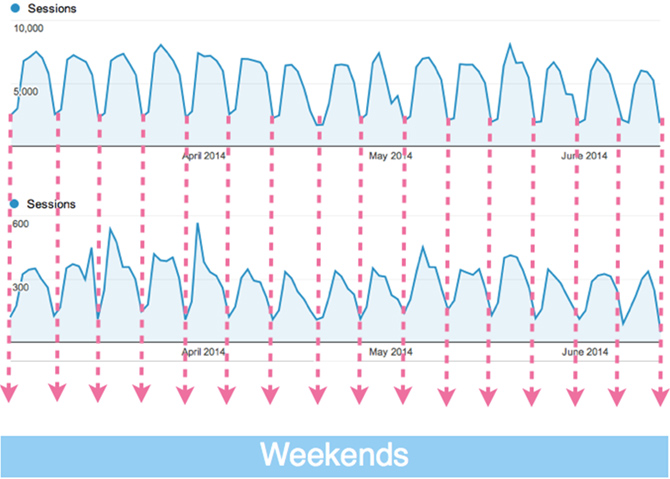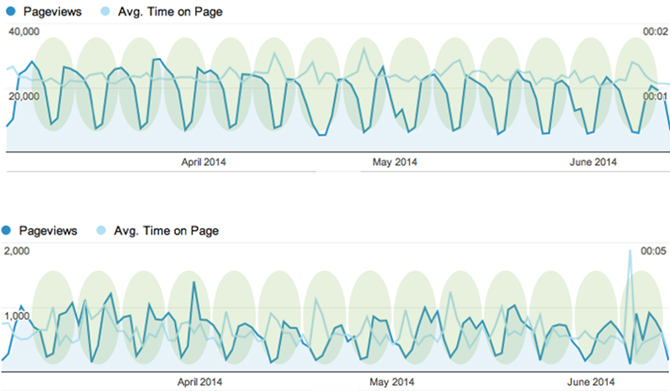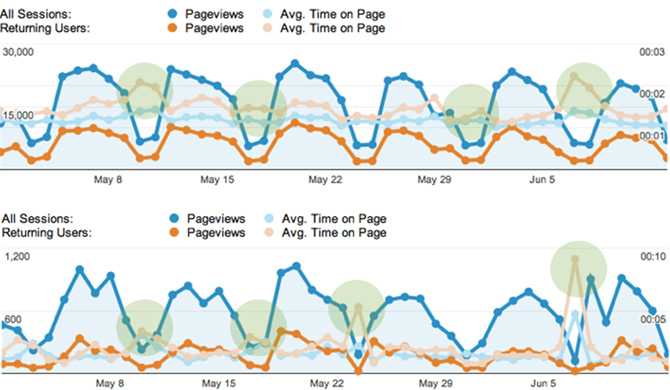It’s been said over and over again, and you’ve been seeing it produced at an unprecedented rate – yes, you know it and we know it, content is king. As a result, your audience has become inundated with stories all competing for a spot in their busy schedules. So how did they adapt? They put a premium on snappy content and developed their speed-reading skills. According to Chartbeat’s CEO, your audience will only give you 15 seconds of attention before they bounce.
If you’re leaving now, I wish you a wonderful day. Please share this article. J
Is long-form a tactical mistake?
No, absolutely not. If you look at your website analytics you’ll see that people are simply busy during the week and glance over a lot of content to stay current on as many topics as possible. Think about your browsing behavior yesterday, how much content did you skim through?
Your traffic stats probably look something like this:

The blue lines represent the number of visits for two different websites over a few months. It’s kind of curious that the graph looks a bit like a hand saw, with peaks and dips that show visits going religiously up and down on the exact same moment for both websites. If we would zoom into the X-axis, we would see that each wave represents a week, with the highest peak of visits usually happening during the middle of the week, and the dip occurring during the weekend.
Now add the average time on page and compare it to the number of visits you are getting. You’ll see that, although there are fewer visitors (it is the weekend after all), they are giving your content more of their time. (Note: Unsurprisingly, weather and holidays also play a huge part on analytics behavior.)

Now, separate the average time on page between new and returning visitors. You may see this:

It shows that the majority of people on your website during the weekend are actually returning visitors who give your content a lot of attention. These visitors are your faithful users.
What does it mean for communicators?
You should continue to focus on producing high quality content that’s relevant to your audience regardless of length. If it’s short, great, be concise and to the point because you only have 15 seconds to impress your visitors. If it’s long, perhaps add a summary at the beginning so your users can quickly decide if this is relevant to them. If it is, they may decide to come back over the weekend – when it’s more convenient.
When consulting your analytics data, don’t focus on the number of sessions or page views your website gets (unless you’ve recently launched it). Instead, focus on average time on page and your number of returning visitors. That’s how you find your faithful visitors.
So go check your stats and let us know: are you getting more weekenders?











